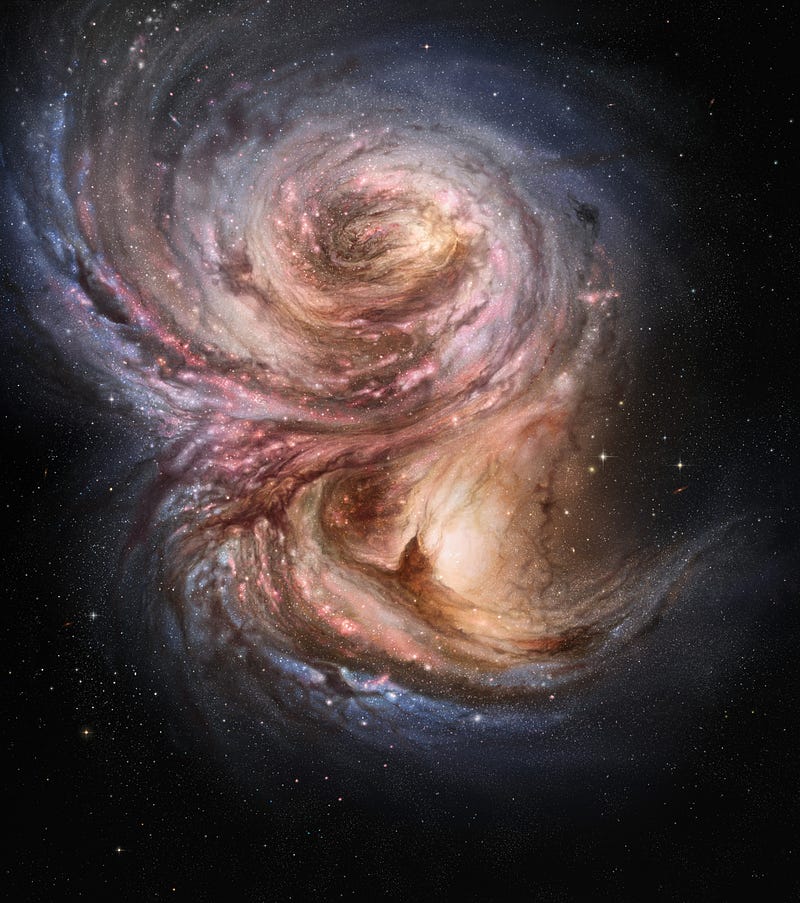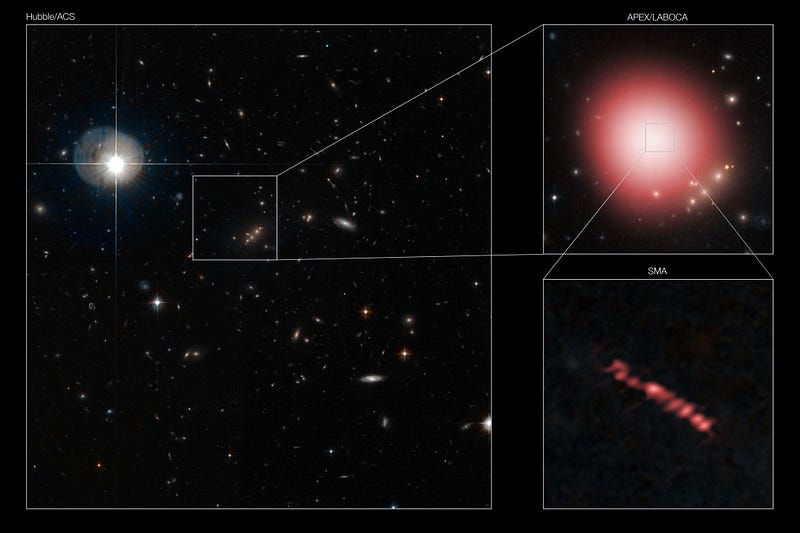Exploring Star Formation in Distant Galaxies
Written on
Chapter 1: Introduction to Distant Star Factories
The universe is a vast expanse filled with mysteries, particularly regarding the formation of stars in distant galaxies. One remarkable discovery involves the galaxy SMM J2135–0102, identified in 2010 by astronomers using the APEX telescope (Atacama Pathfinder Experiment). This galaxy's light has traversed an incredible distance of ten billion light-years to reach us, allowing scientists to glimpse its characteristics from an ancient era of cosmic history.
The image of SMM J2135–0102 was magnified by a gravitational lens created by a massive galaxy cluster situated between this ancient light source and Earth. This fortunate alignment unveiled an active region of star formation, where stars are being produced at an astonishing rate—approximately 250 times faster than what is typically observed in nearby galaxies. The research findings were published in Nature on March 21, 2010.
Section 1.1: The Role of Galaxy Clusters
Galaxy clusters are the largest gravitationally bound structures in the universe, often containing hundreds or even thousands of galaxies, along with vast amounts of gas and dark matter. Their total mass can reach around one million billion solar masses (10^15). While observing the galaxy cluster MACS J2135–010217, located about four billion light-years from Earth, astronomers serendipitously discovered a gravitational lens effect that revealed the distant galaxy SMM J2135–0102, which is notable for its intense star formation activity.

Chapter 2: Observations and Discoveries
The Submillimeter Array (SMA), an 8-element interferometer atop Mauna Kea in Hawaii, played a crucial role in observing the star-forming regions of SMM J2135–0102 at a scale of several hundred light-years, comparable to larger nebulae in our Milky Way. The star factories identified in SMM J2135–0102 share similarities with those in our galaxy but are significantly larger and more luminous. This indicates that star formation during the early stages of a galaxy's life was much more vigorous than what we see in the Local Universe.
Carlos De Breuck, a co-author of the study, noted that SMM J2135–0102 is producing stars at a remarkable rate, equivalent to about 250 Suns annually. The star formation process in its extensive dust clouds differs from that observed in nearby galaxies, yet the underlying physics may still hold valuable insights into star birth in these more distant galaxies.
The first video, "Leindert Boogaard: Fuel up! Stars forming in distant galaxies," offers a deeper understanding of how stars are born in these distant regions, shedding light on the processes involved in star formation.
Section 2.1: Imaging Techniques and Findings
Recent observations with the Submillimeter Array revealed that SMM J2135–0102 was the brightest galaxy observable at submillimeter wavelengths during that period. Though it is heavily obscured in visible light, it emits significant amounts of radiation detectable by the SMA.
Using the Zpectrometer on the Green Bank radio telescope, astronomers could accurately gauge the distance to SMM J2135–0102 and reconstruct its appearance as it would have been without the gravitational lens's distortion. This reconstruction provides a glimpse of the galaxy as it existed ten billion years ago, likely as a massive elliptical galaxy nearing the end of its evolution, with a diminished capacity for star production.

Chapter 3: Comparative Analysis with Nearby Galaxies
An interesting comparison can be made with Arp 220, a galaxy located approximately 250 million light-years away from Earth, which shares characteristics with SMM J2135–0102. Arp 220 is the result of a collision between two spiral galaxies, igniting intense star formation activity. Within a compact region of just 5,000 light-years, over 200 large star clusters can be found, visible as bright blue-white knots in Hubble images.
The second video, "2023 September 08 - Star Factory Messier 17," provides insights into the ongoing research into star formation in various nebulae and galaxies, further enhancing our understanding of this cosmic phenomenon.

In summary, the study of galaxies like SMM J2135–0102 not only enriches our knowledge of star formation in the early universe but also helps to draw parallels with similar processes occurring in our own cosmic neighborhood.